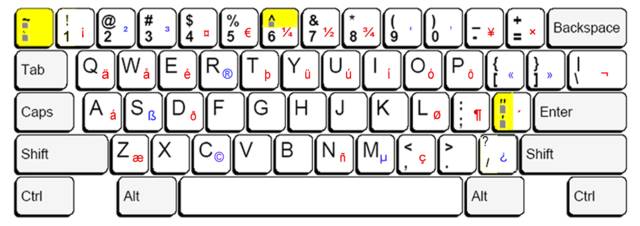

Right click on the mouse and choose paste (or hold down the Ctrl key while you type the letter v).Ĭ) These characters are also in many of the fonts found in the Character Map (Start/All Programs/Accessories/Character Map) and can be selected, copied and pasted as above. Click one time so the location curser is active.
A WITH UMLAUT PC CODE
For further reference, see - look for the glyph you need then use the Code (U+00c6) from the second column.Ĭopy and paste the Æ, Ø, and Å from another document Ī) This can be done by highlighting the letter, then with the mouse pointer on the highlighted text, do a right click on the mouse and choose copy (or hold down the Ctrl key while you type the letter c).ī) Move your mouse pointer to the location you want to paste. You may type leading "0"s if you like, such as 00c6. For example, using the left side press Ctrl-Shift-U then c6 then Enter will produce Æ.

Then type the code for the character and hit Enter. On a Linux distribution you can use a control key combination and the Unicode code for the character.įirst, hold down the Ctrl and Shift keys on the left side of the keyboard and press U. Type the Æ, Ø, Å and ß using the Unicode code (Linux) For example, to enter the Æ character, hold down both the Fn key and the Alt key, then type each key in sequence: J, then U, then O when you release the Fn and Alt keys, the Æ character will appear in your text entry box. The keys used for numeric entries are usually as follows: M = 0, J = 1, K = 2, L = 3, U = 4, I = 5, O = 6, 7 = 7, 8 = 8, and 9 = 9. under the J key on my keyboard is a number 1) and may also be in a different color. The actions of the function key are usually below the main key action (e.g. If you are using a laptop which does not have a numeric keypad, you can use the Fn (function) key with the Alt key to access these special characters.

Once you release the Alt key, the letter will appear. When you want to type in a Danish letter you hold down the Alt key and type a code into the 10 key pad. Type the Æ, Ø, Å and ß using the 10 key pad and the Alt key. While the Danish keyboard is activated, other have been rearranged as well. You can type the upper case or lower case of each letter by using holding down the Shift key as usual. The Danish keyboard provides the Æ, Ø, and Å as follows: Now the EN icon has changed to DAĬ) As long as the little icon shows DA, you are using a Danish keyboard.
A WITH UMLAUT PC FOR WINDOWS 10

A WITH UMLAUT PC HOW TO
** Above mentioned procedure is not aplicable for MacOS.įor more information on how to use symbols, emojis please check our How to use Alt-Codes? page.


 0 kommentar(er)
0 kommentar(er)
